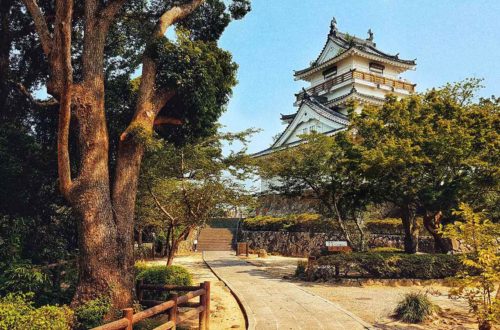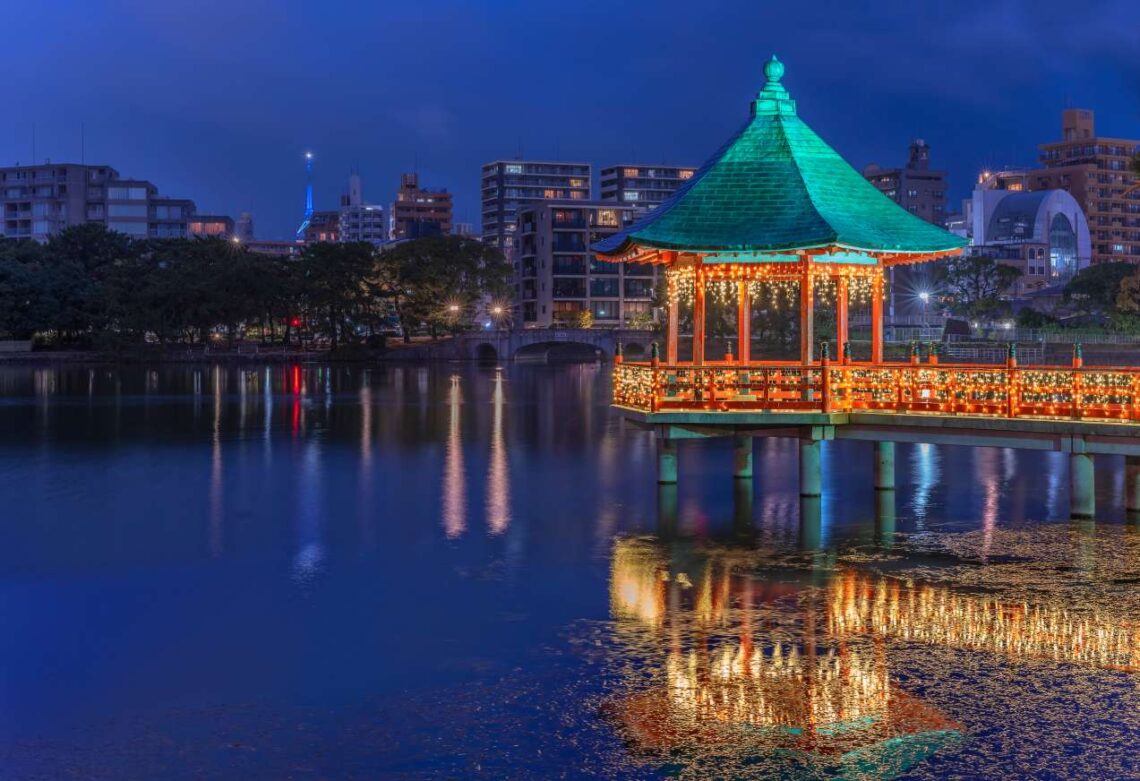
Ohori Park – The Ultimate Guide to Fukuoka’s Tranquil Park
Ohori Park (or Oohori-Kouen/Ōhori-Kōen/大濠公園) is a huge pleasant park located in downtown Fukuoka; and a popular getaway from the hustle and bustle of the city among the locals. It was once a defensive moat for the next door Fukuoka Castle (福岡城), before being transformed into a recreational park today.
Despite being located in the middle of the city, the park is surprisingly peaceful; offering quiet moments especially for families and couples who wish to spend their time together alone. Let’s explore what this old and scenic park has to offer:
- Learn more about the history behind Fukuoka’s most famous park.
- Check out the park’s beautiful and scenic pond.
- Then, we explore the islands to catch a glimpse of the beauty of the pond from a different perspective.
- Also, don’t forget to look out for the little Japanese garden tucked in the corner of the park.
- Afterwards, look out for the adjacent ruins of the once magnificent Fukuoka Castle.
- And finally, drop by these notable attractions and check out how to get to this lovely park here.
Table of Contents
History
Ohori Park was built as a defensive moat for the magnificent Fukuoka Castle; the home castle of the Kuroda clan (黒田氏). In fact, the land where both the park and the castle ruins was awarded to the Kuroda clan (黒田氏) by none other than Tokugawa Ieyasu (徳川家康), one of the three unifiers of Japan. This award was for the contribution of the Kuroda clan as they sided with the Tokugawa clan (徳川氏) in the famed Battle of Sekigahara (関ヶ原の戦い) to defeat the enemies and even killed a famed general known as Shima Sakon (島左近).
When the lord of the Kuroda clan, Kuroda Nagamasa (黒田長政) commenced the construction of Fukuoka castle in AD 1601, he also ordered the construction of the moat. For a fun fact, the area was originally a marshland called Kusagae (草ヶ江) which was connected with the Hakata Bay. Upon construction of the moat, Kuroda Nagamasa changed the name of the area into Ohori (大濠); literally translates as a large moat.
Fast forward few centuries later, the local council commenced a construction plan in 1925 to transform the area into a park upon receiving proposals from the locals. The design of the park derived its inspiration from the West Lake of Hangzhou, China; incorporating elements such as a scenic pond together with gardens. Eventually, the park was opened in 1929 and it became a beloved hang out spot among locals; simply for its scenic beauty.
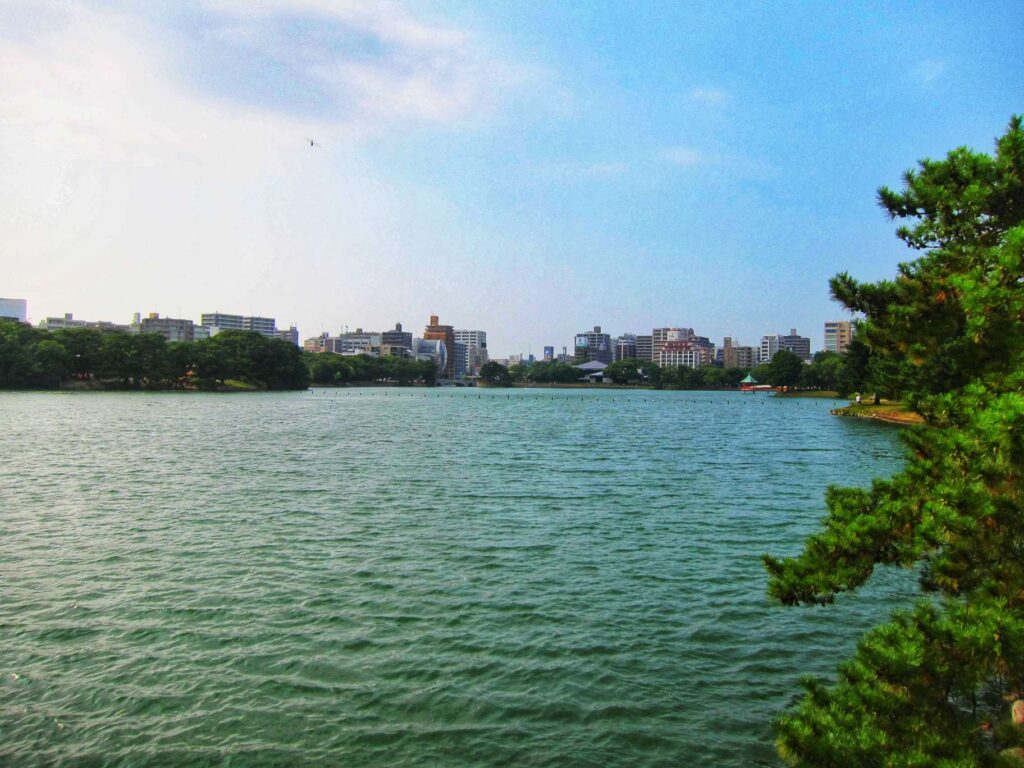
Exploring Ohori Park
Ohori Park's Iconic Scenic Pond
Undoubtedly the main highlight of the park is its breathtaking pond in the centre. There is in fact, a 2 km long path surrounding the pond, where one can take an easy stroll along the pond to enjoy the beautiful view. Undeniably a haven for the joggers. What turns up the scenic level of this pond however, are the artificial islands in the middle of the lake. There are a total of 3 of them, and these are created to replicate the scenery of the West Lake in Hangzhou, China.
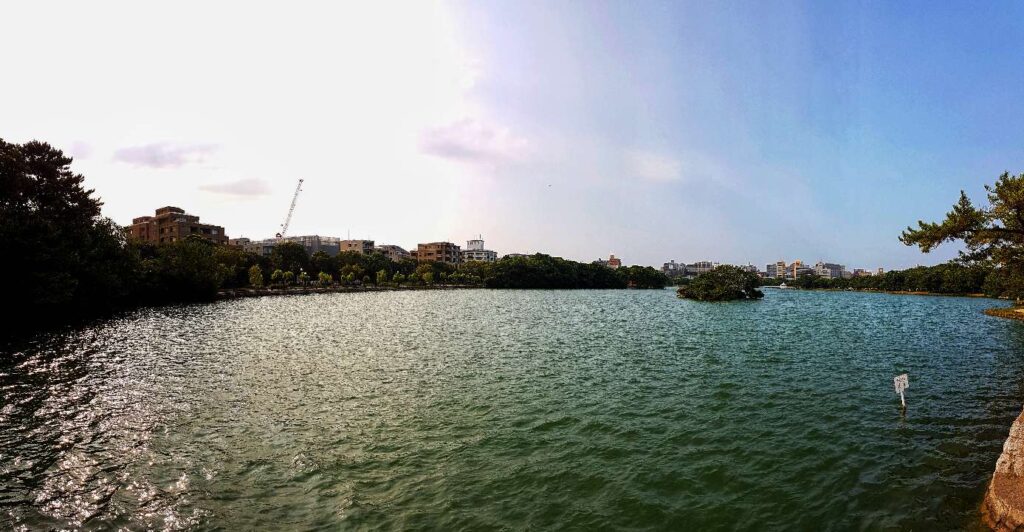
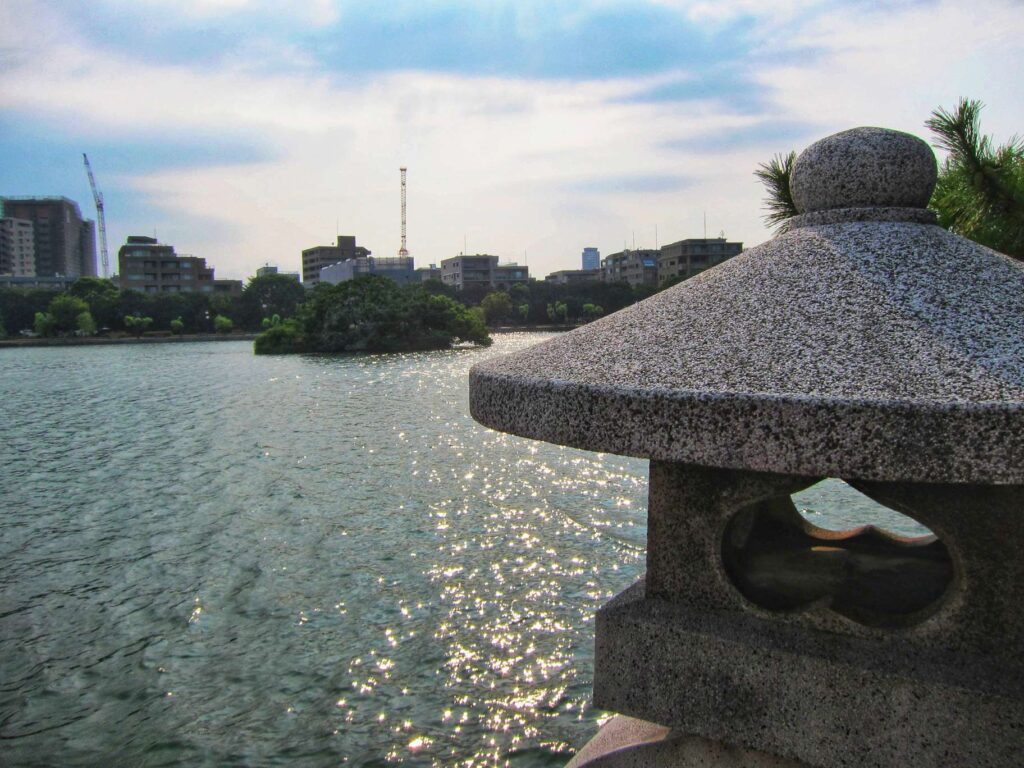
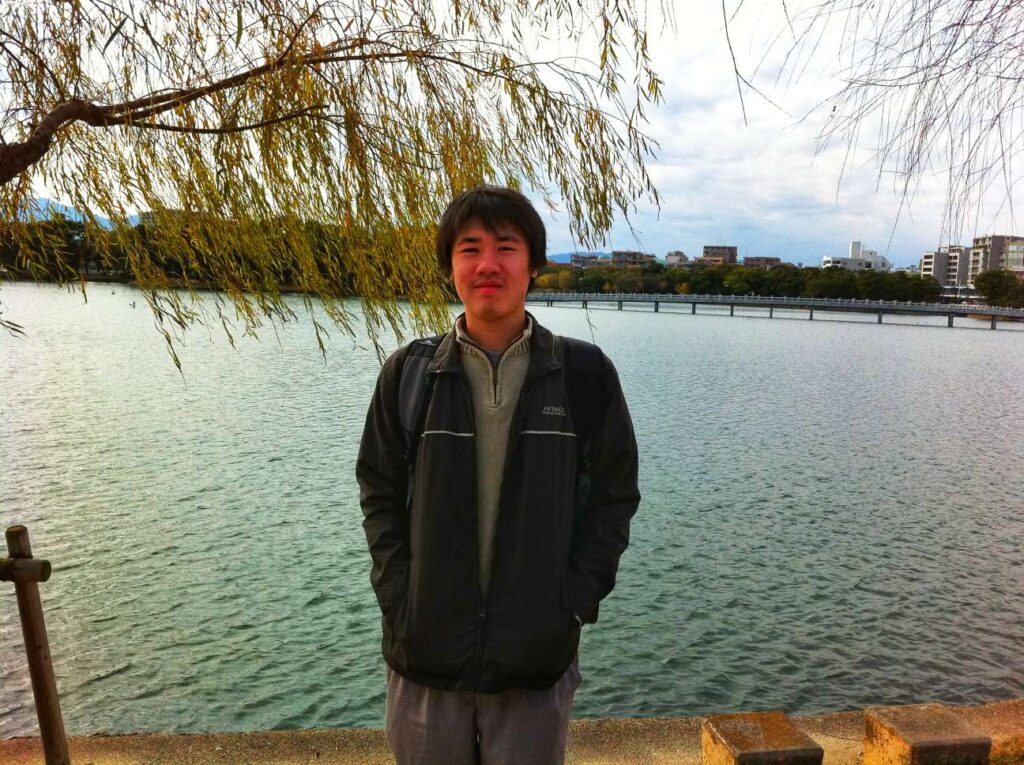
These three islands are the Yanagishima (柳島), Matsushima (松島) and the Shobujima (菖蒲島). Their names are named after the Japanese names for the willow trees, the pine trees and sweet flag respectively. Also, the local council built a total of four bridges to connect these islands. A rather cool idea in my opinion, as it allows visitors like myself to explore the islands and catch even more beautiful sceneries from different angles.
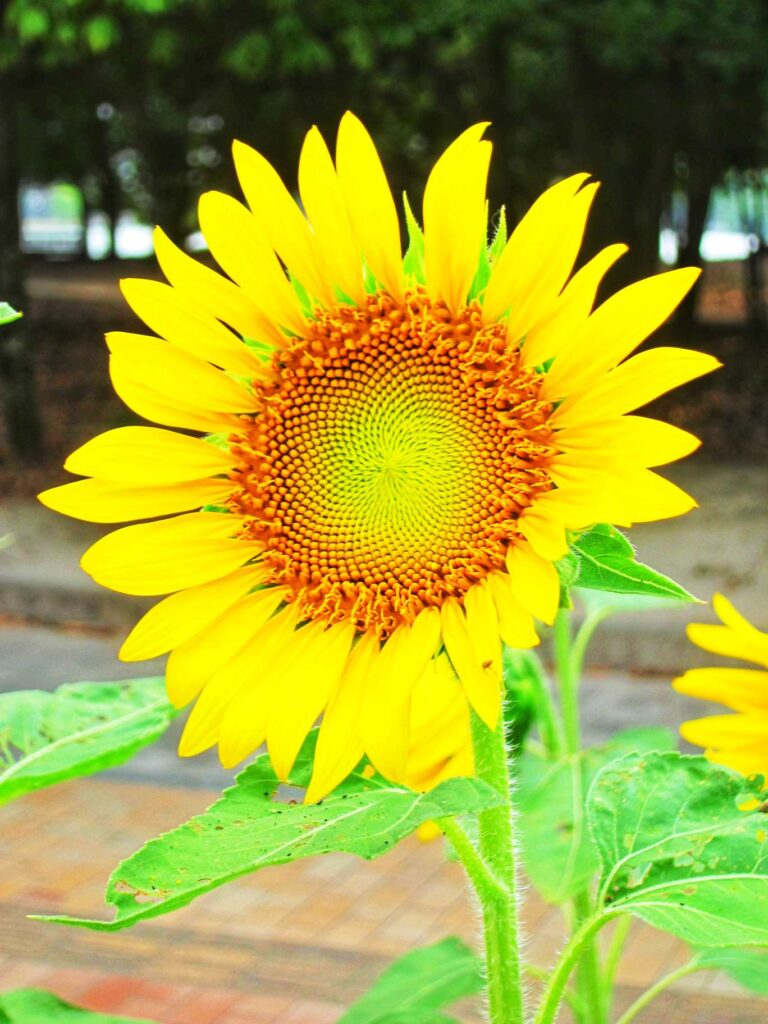
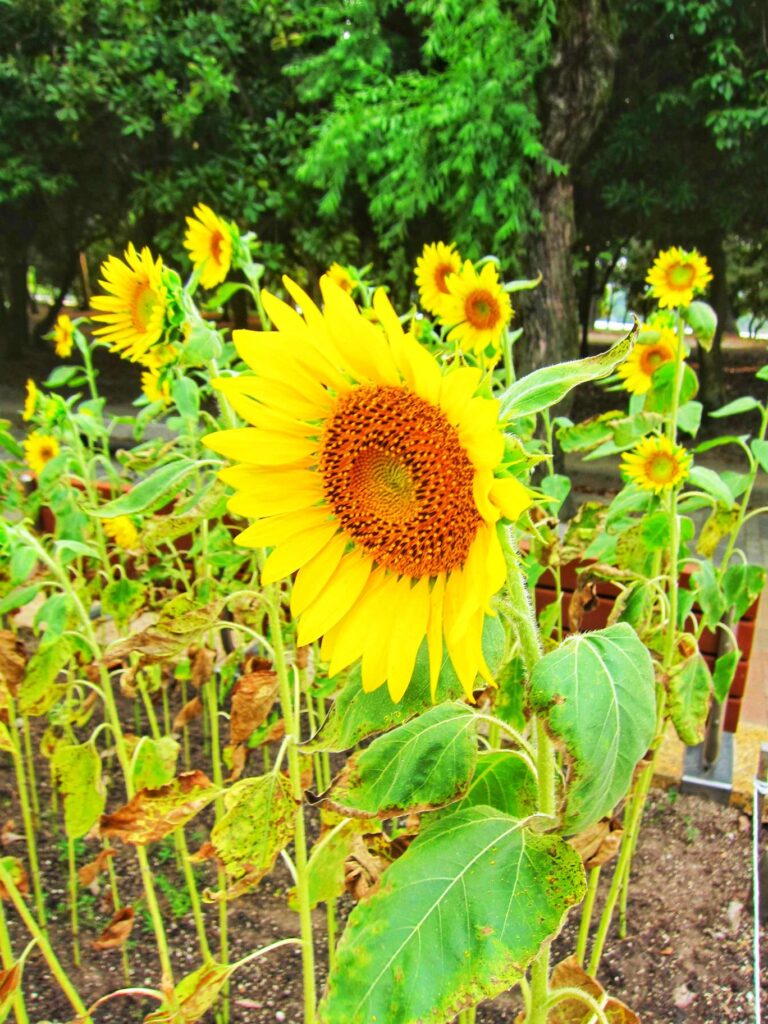
Also, for those looking for a quiet romantic moment together with your partner, consider renting a swan boat to paddle along the pond and enjoy the surrounding scenery.

Take a Stroll Along the Islands of Ohori Park
We then cross the bridge to the islands in the centre of the lake to check out a couple photogenic spots. The first of these is the outstanding Ukimi Pavilion. Believe it or not, this beautiful vermillion-coloured is not an original structure of the park. It was once a pavilion in a local zoo, serving as a platform for visitors to feed the fur seals.
However in 1944 during World War 2, the zoo was destroyed by American bombers and many animals were killed as well, forcing the closure of the zoo. The pavilion miraculously survived the bombings; and the local authorities could not bear to demolish such a beautiful pavilion. Hence, they decided to move the pavilion to its current location. Today, the pavilion serves not just as an icon of the park, but also a lovely photography spot.
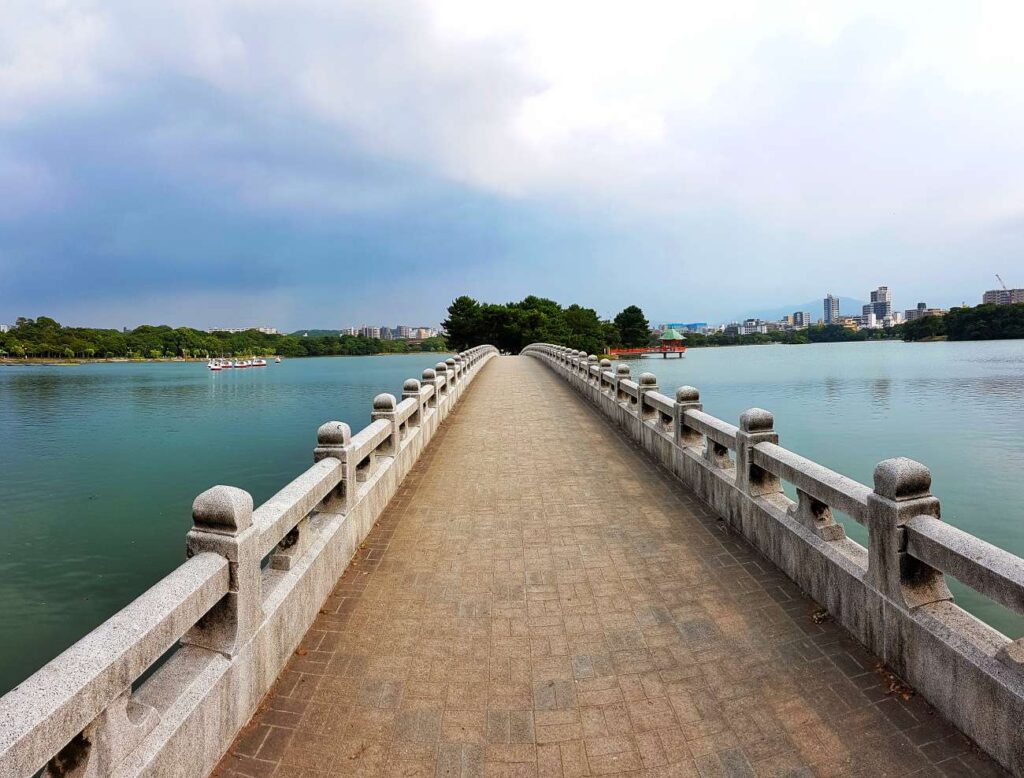
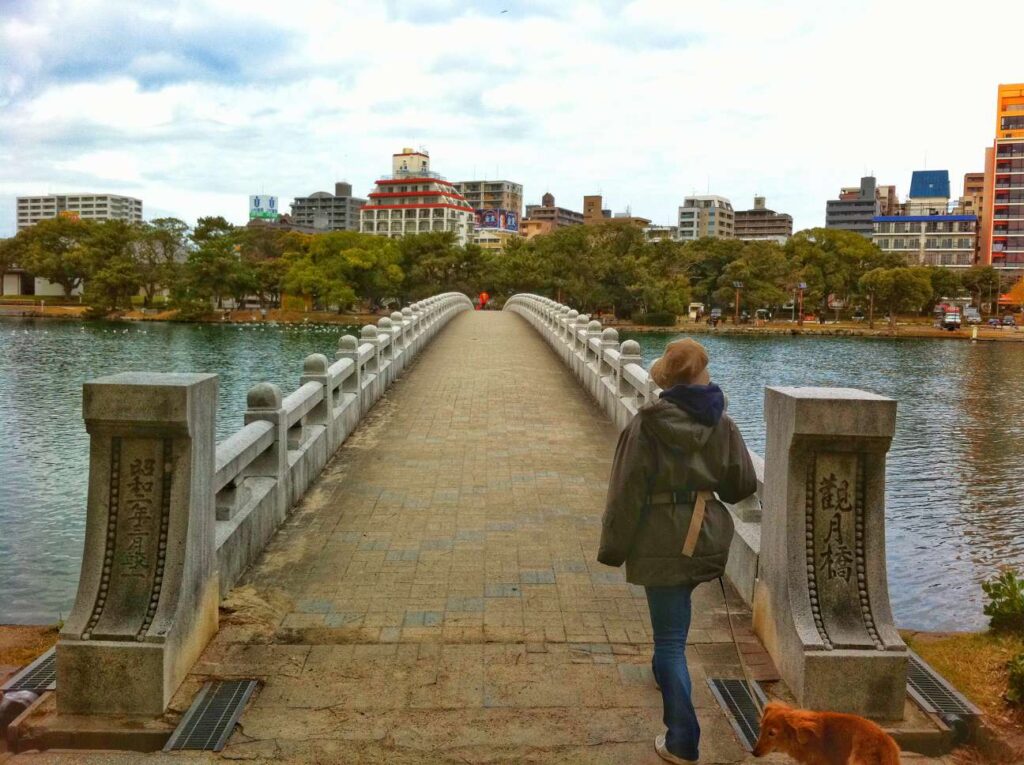
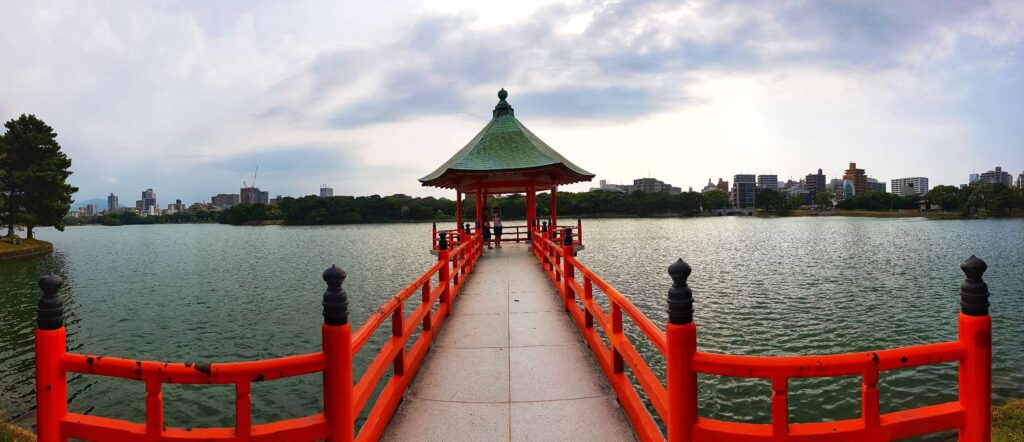
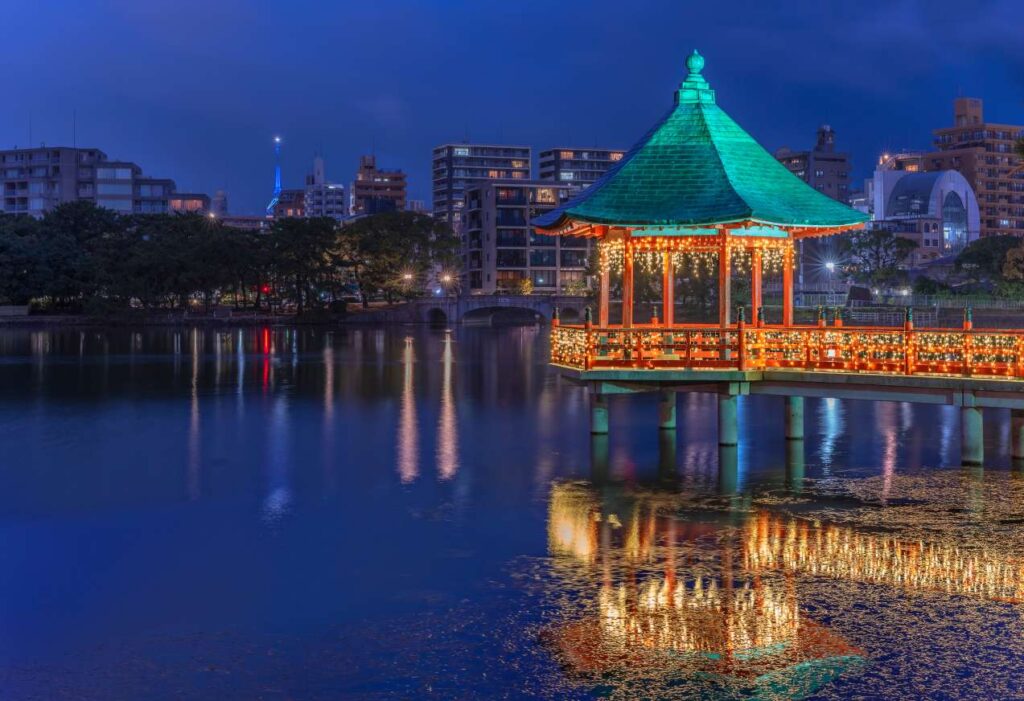
From the mini islands, one can catch the glimpse of the park from the other side; offering a different perspective to capture the beauty of the park. The tall and lush trees here offer a nice shade from the sunlight; while serving as a lovely natural frame for potential photoshoots. And if you are lucky, you can even spot a few birds along the way such as the grey heron (aosagi/アオサギ). For a little photography tip, try capturing a shot of the traditional-looking bridges together with the trees for some Japanesque shots.
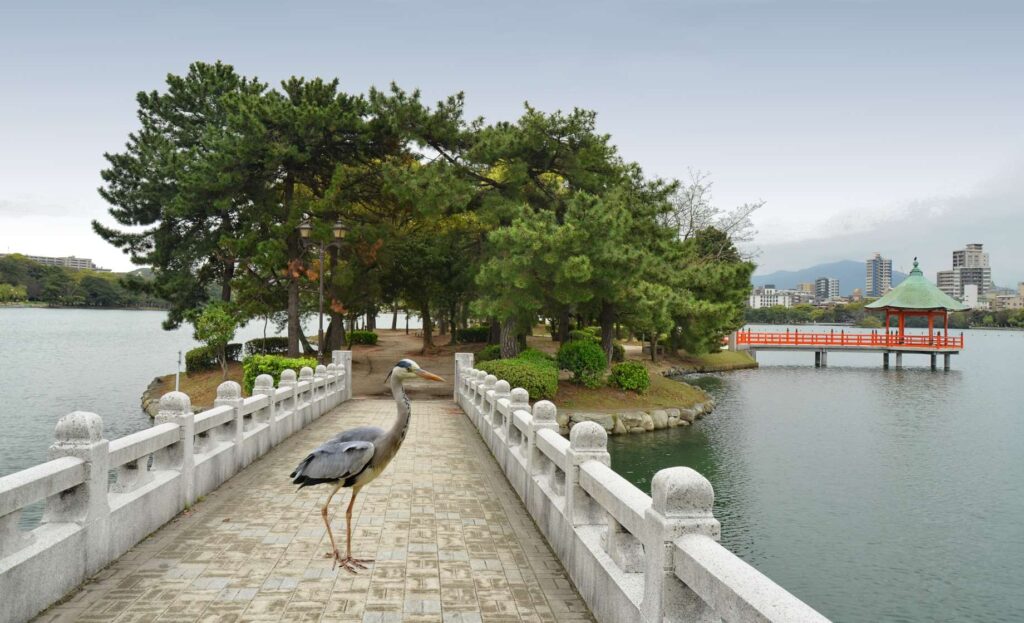
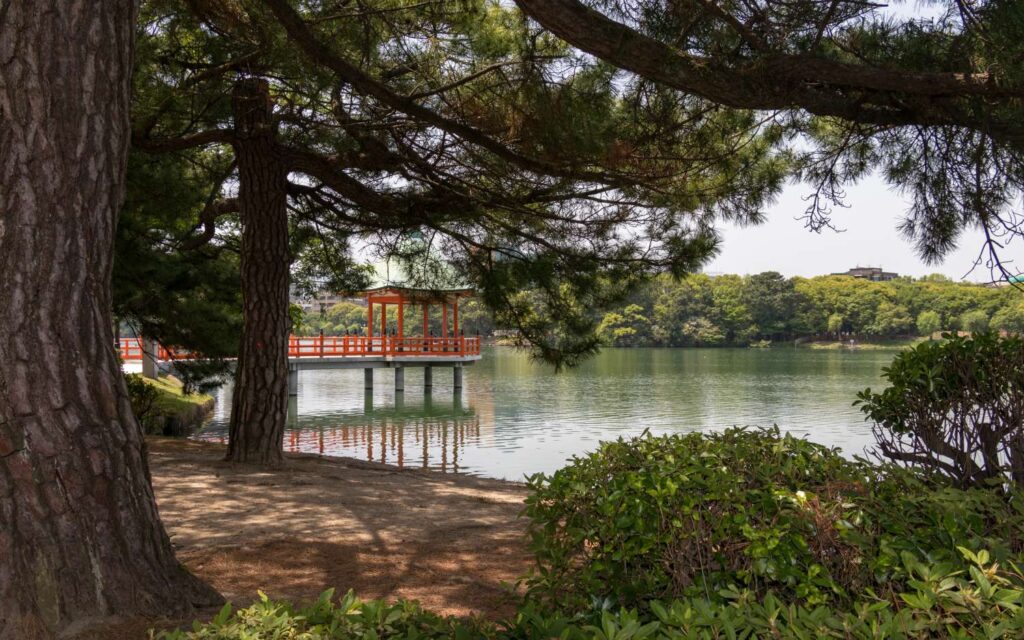
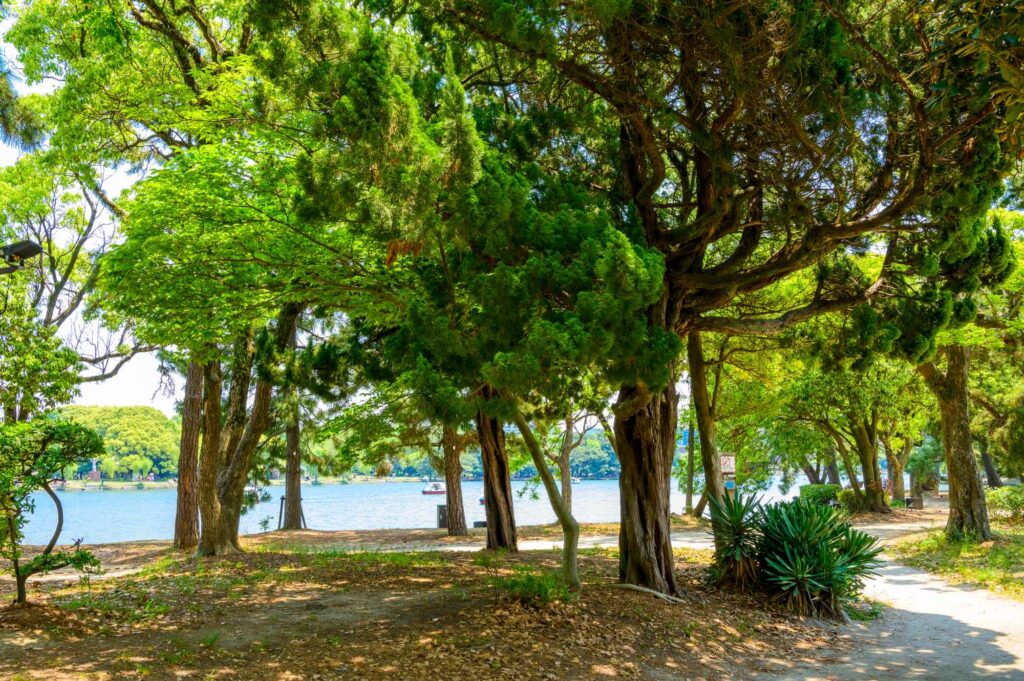
Drop by this Hidden Japanese Garden
Apart from the park, there is also a small traditional Japanese garden to look out for. This garden was opened in 1984 to mark the 50th anniversary of the park. For those who are interested in seeing what an actual Japanese garden looks like, this place is certainly one not to be missed. It features a central pond being surrounded artificial hills, beautifully arranged bonzai (盆材) trees, mini bridges and waterfalls, as well as a traditional teahouse.
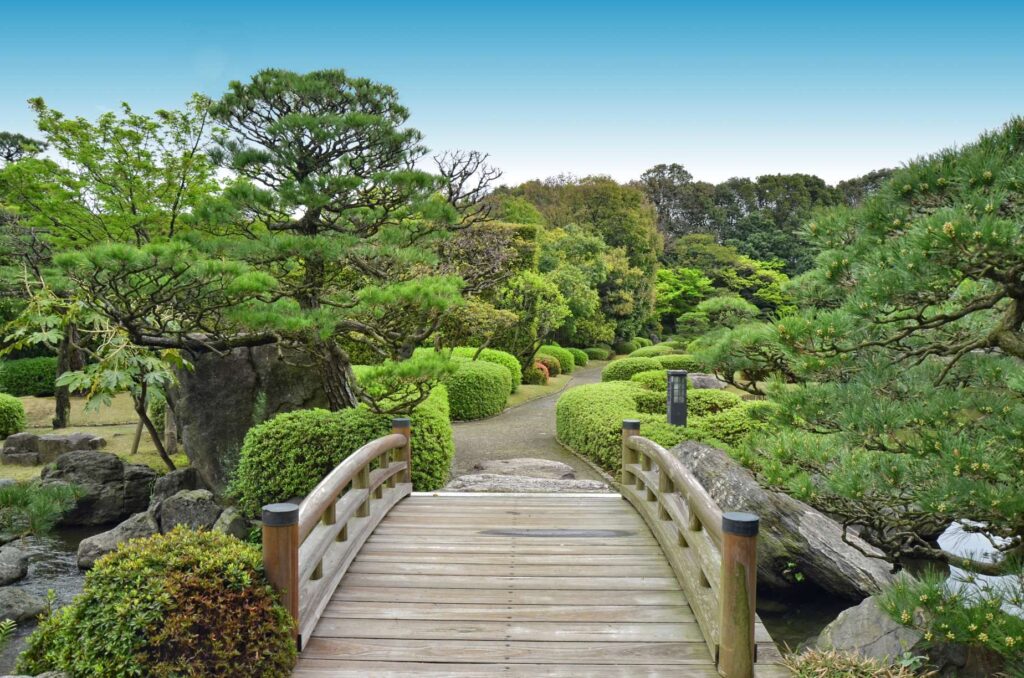
While there are certainly plenty of larger and more beautiful traditional gardens in Japan, this garden itself is smaller and less crowded than some of the other popular ones. Opportunities for photo are also plenty; including the area around the pond and also my personal favourite, the mini waterfalls. The silent nature of the garden, accompanied with the sound of the flowing water is enough to ease even the busiest minds. Do note that there is a small entrance fee to pay for entering the Japanese garden (240 yen for adults and 120 yen for children).
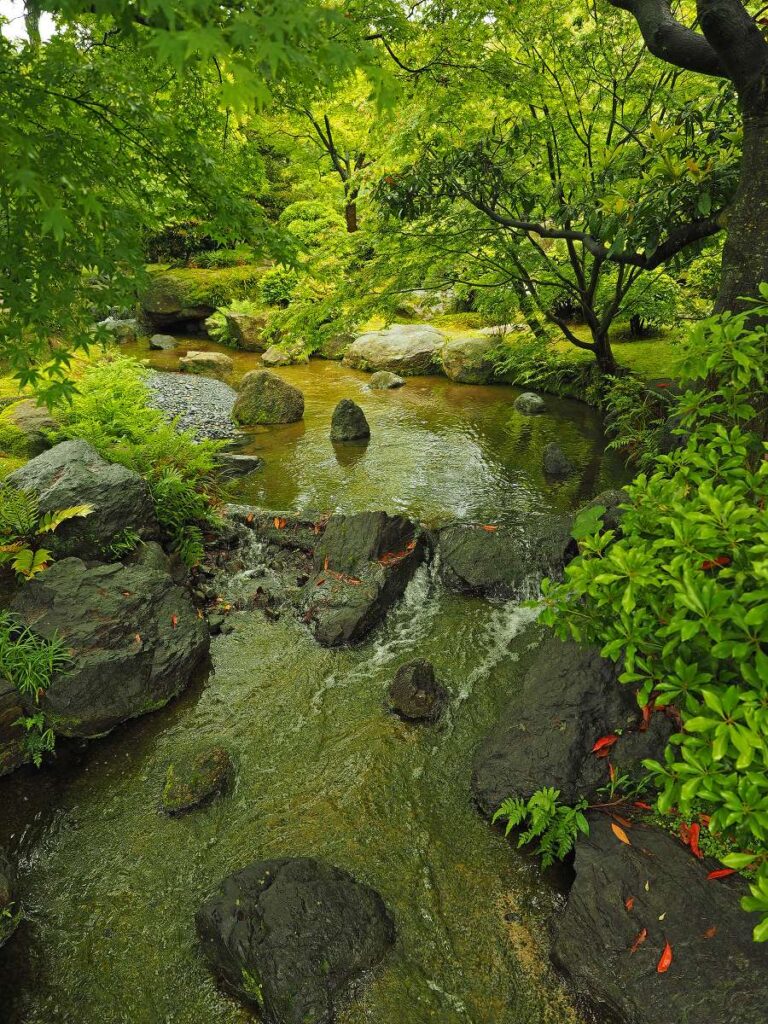
Pay a Visit to the Neighbouring Fukuoka Castle
After exploring the park, one shouldn’t miss out on the neighbouring Maizuru Park (舞鶴公園), home of the ruins of the once majestic Fukuoka Castle (福岡城). The castle was once the largest in the island of Kyushu (九州) and was nicknamed the ‘Stone Castle (石城/seki-jo)’; mainly because of its impressive stone walls.
Unfortunately during the Meiji period (明治時代), many parts of the castle were dismantled under orders from the new government; as part of the effort to curb the power of the feudal lords. A shame really, as the castle could potentially served as a magnificent heritage site on its own right.
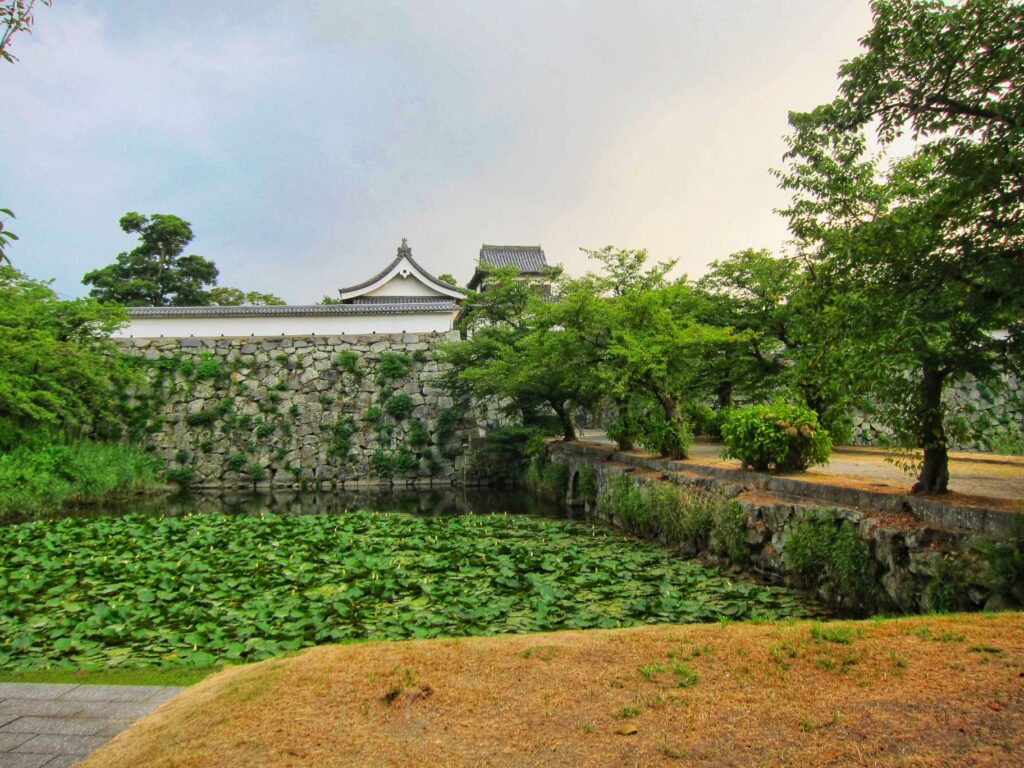
Also, if you are here during late-Mar to early-Apr, this spot is a must-visit especially for fans of cherry blossoms. The scenery here is truly undeniably stunning with the rustic stone foundations are graced by the presence of the light pink cherry blossoms. As I have already covered the castle in further details in my previous article, I would suggest to check it out here if you are interested.
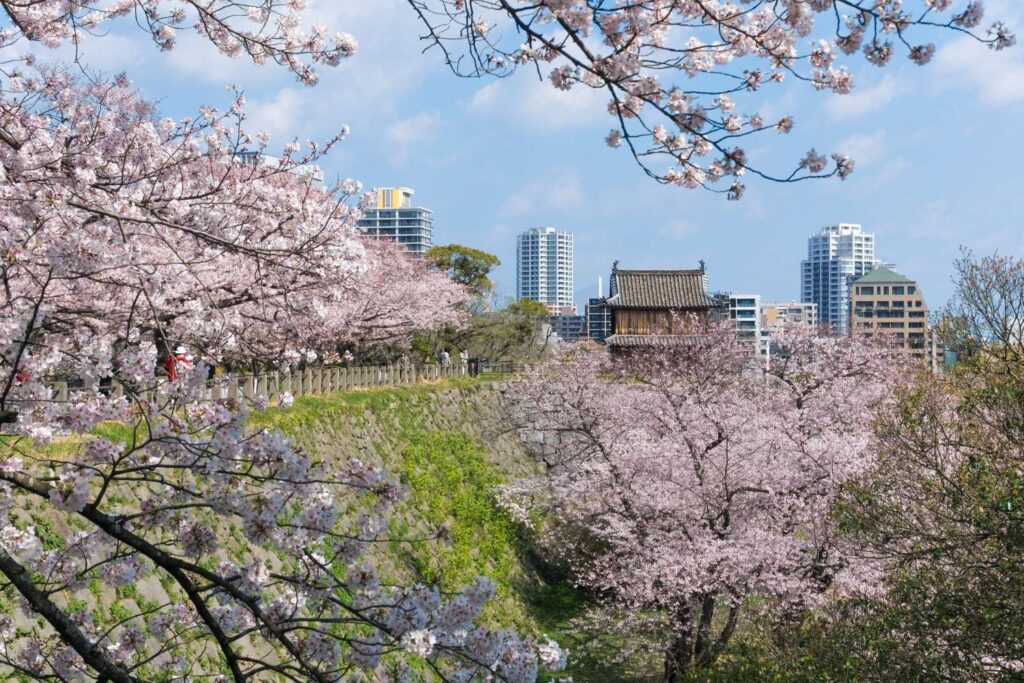
Check Out These Other Attractions
Apart from Ohori Park itself, there are also other notable attractions to look out for. The first is the Fukuoka Art Museum (福岡市美術館) which is just right next to the Japanese garden with a generous entrance fee of 200 Yen. This art gallery features two stories of gallery; the first floor is for pre-modern art and while the second is for contemporary art.
On the pre-modern side, one should expect an exquisite collection of tea ceremony utensils from Matsunaga Yasuzaemon (松永安左衛門), a once leading entrepreneur in Japan’s power industry as well as intricate Buddhist arts from the Tokoin temple. On the contemporary side, one can look forward to the multifaceted works of renowned artists such as Salvador Dali, Marc Chagall, Andy Warhol as well as several local Japanese artists.
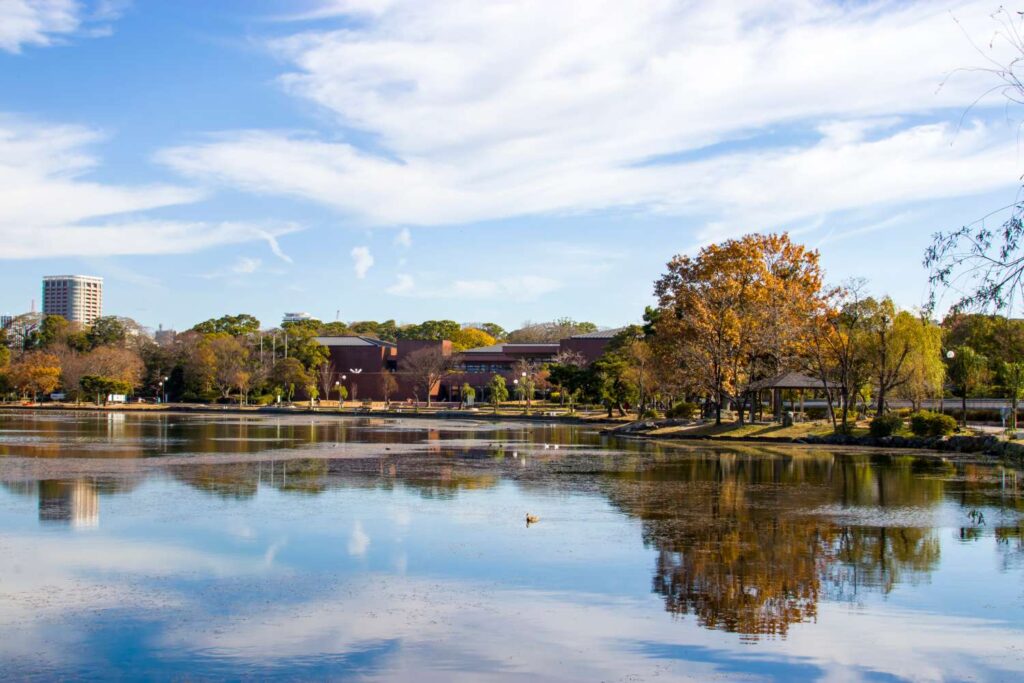
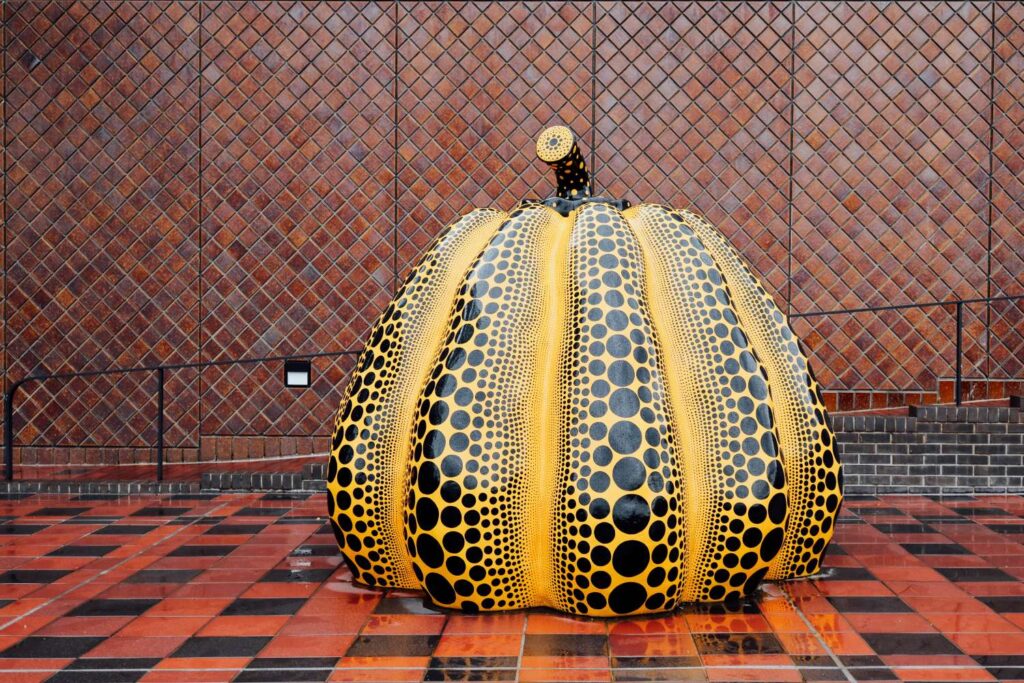
Alternatively, fans of Shinto shrines (jinja/神社) should not miss out on the nearby Gokoku Shrine (護国神社). This shrine was constructed as a dedication for the Japanese who lost their lives in wars since the Meiji period (明治時代), While it is modern in comparison to many other shrines, it makes up for it with its serenity and massive 13 metres tall wooden torii (鳥居) gate too. This impressive torii is made out of raw wood, and is said to be the largest of its kind in Japan.
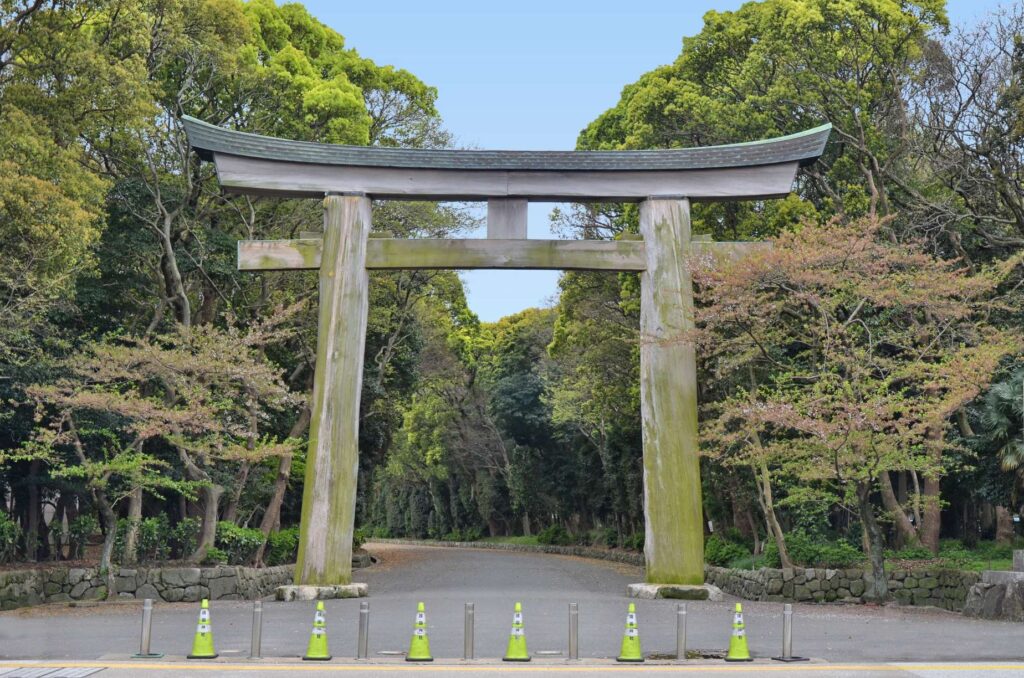
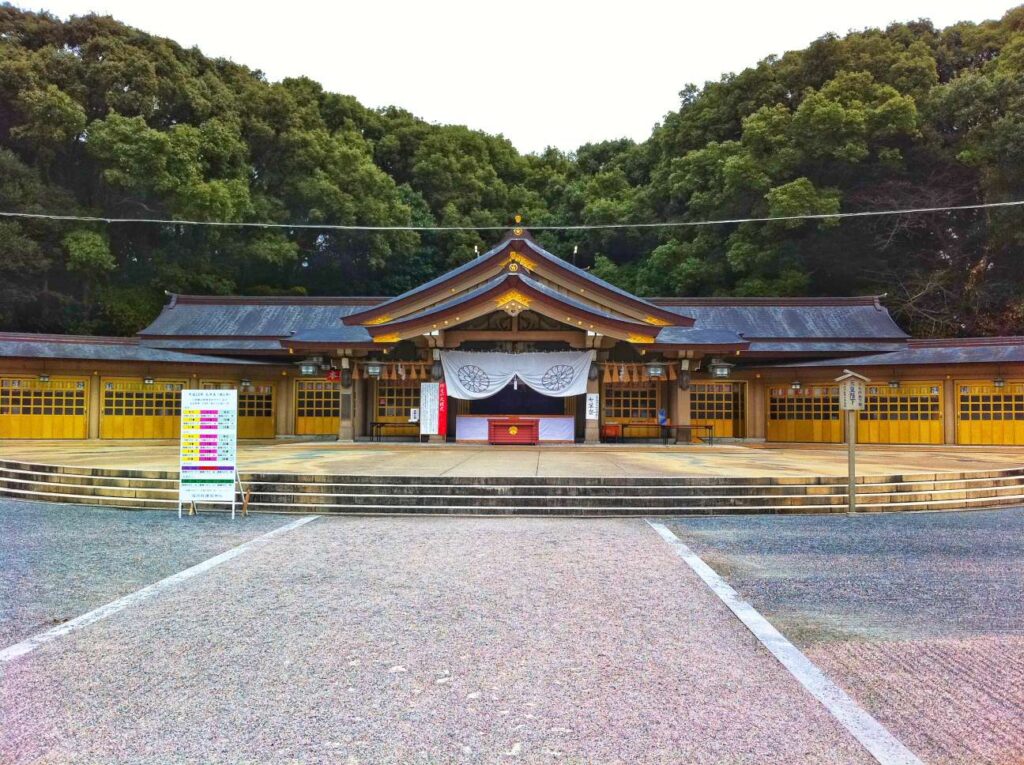
How to Get There
By Train
Ohori Park can be easily reached from both Hakata station (博多駅) and Tenjin station (天神駅). From Hakata station, take the Airport subway line for about 10 minutes (5 minutes from Tenjin station) and disembark at Ohori Park station (Ohorikoen/大濠公園). From there, both Fukuoka Castle and Ohori Park are within 10 minutes walking distance.
If you are from another city, board a train or shinkansen (新幹線) towards Hakata station (博多駅) of Fukuoka (福岡). I would suggest getting the JR Pass (JR パース), a handy all-you-can-ride pass on all JR lines especially if you are travelling in between cities of Japan. A great option for those visiting multiple cities and looking to save on transportation costs.

By Car
There are also parking slots available for those who are renting a car to travel across the country. There are at the north side of Ohori Park with the rates of 220 Yen for the first 2 hours and 170 Yen for every subsequent 30 minutes. While parking fees are generally pricy in Japan, renting a car however is one of the better options to explore the countryside as well as the lesser known parts of Japan.
If you are looking to venture into the countryside of Japan conveniently, consider renting a car from Tocoo. In fact, a friend of mine used Tocoo which he was able to drive around his family conveniently across various towns and cities of Japan. Are you unsure of getting the necessary license and familiarising with the rules of driving in Japan? Fret not as they also provide comprehensive and elaborate guides in their site on what you need to start your driving journey in Japan. Undoubtedly a great option for those seeking to add some lesser known destinations into their itinerary.
Stay Connected with Portable Wifi
While there are several spots in Japan that do offer Wifi, it can be difficult to gain access to secured internet connection even around urban areas. For our trip in Japan, my wife and I used Ninja Wifi and we had an easy time travelling to even the smallest towns and secluded mountains while staying connected with our families.
Ninja Wifi offers eSIM and portable Wifi services that provided us with a stable internet connection during our road trip in Japan. In particular, the portable Wifi allows several devices to connect simultaneously and all we need to do was to scan the QR code and we easily got connected in just a minute. Book your Wifi services here with 10% discount for your next Japan trip!
Overall Thoughts
A simple and relaxing destination overall; Ohori Park is definitely a destination to consider if you are looking to take it easy. It features a variety of attractions to look out for as well; making it worth the time to spend at least half a day exploring the area. And it also appeals to the nature lovers as well, featuring a variety of trees and unique birds flocking around the lake.
Also, if you love to discover more hidden gems within Japan, be sure to subscribe as I will be sharing more fascinating gems of Japan in the near future.
Loving the content here?
Get your free Japan Hidden Gems Bucketlist!


You May Also Like
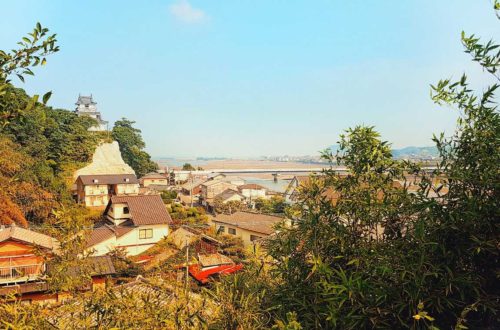
The History of Kitsuki Castle – Japan’s Smallest Castle
May 8, 2021
Hikone Castle – The Ultimate Travel Guide & Must-Know Hidden Tips
December 14, 2024